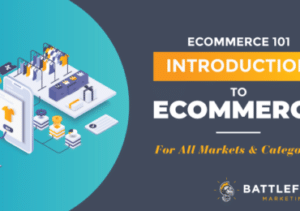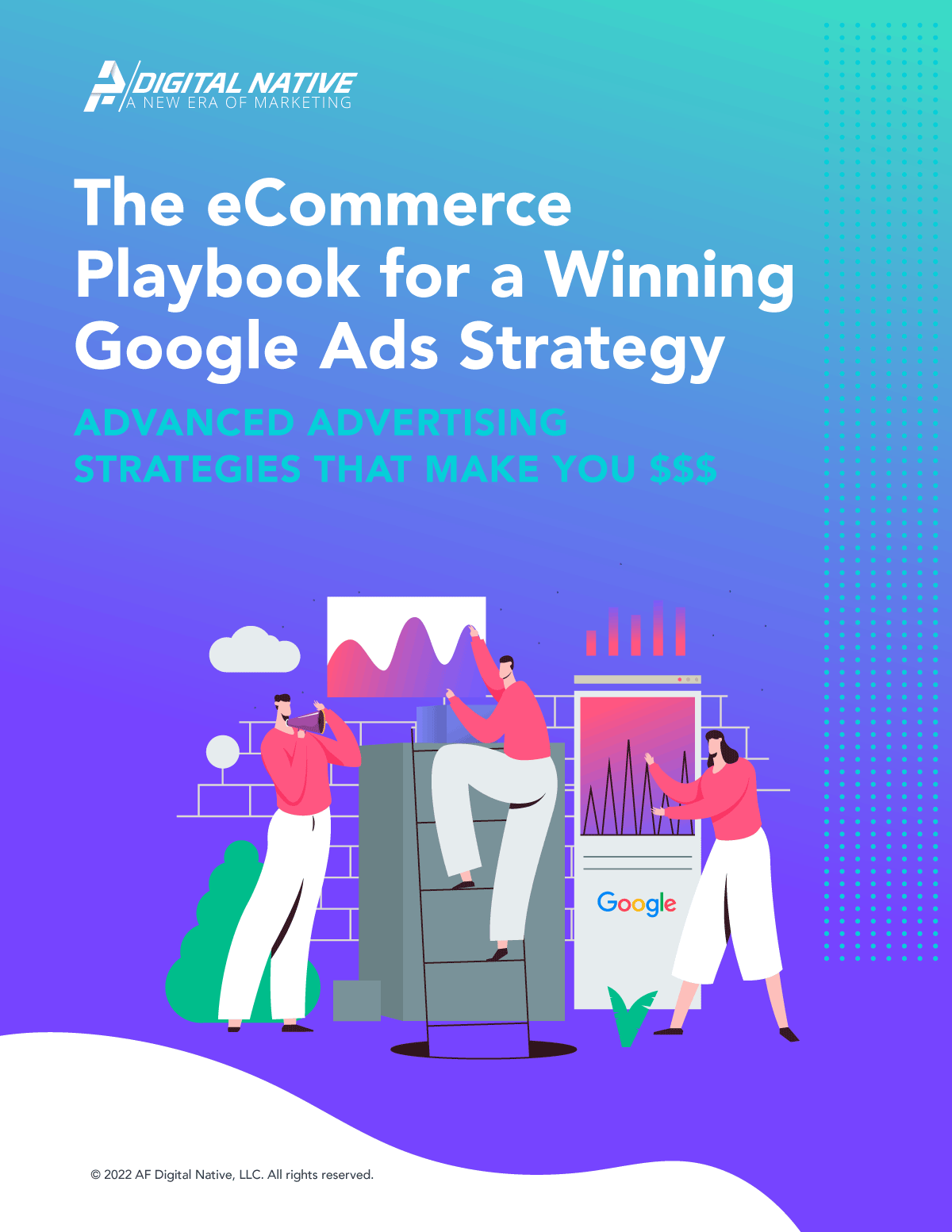What is Conversion Rate Optimization?
Let’s be honest. Your website was really only built to do two things, attract visitors and ultimately compel those visitors to take some sort of action. In the world of metrics these two can be measured by looking at traffic and conversions.
Conversion Rate Optimization (CRO) is the process of improving that percentage of users who took a specific action (conversion) as it relates to the total number of website visitors (traffic).
I love the way Johnny Cheng, a Platform Product Marketing Manager at Marketo, describes it:
“Conversion rate is one of the most important marketing metrics. It’s a metric that lead generation marketers—from practitioners all the way up to CMOs—are measured on.”
Now conversion rate optimization is not simply limited to one’s website but can be applied to various other systems and platforms like web/mobile applications, landing pages or even newsletters.
What is a Conversion?
Conversion refers to the process of turning a website visitor who comes to your website into a paying customer. Basically, it means convincing a visitor to purchase or buy whatever product / service you are selling them.
However, the term conversion is not just for identifying people who turn into paying customers. Instead, it could be used to refer to any person whom you have successfully convinced to perform a desired action. This action can be anything, like convincing them to visit an affiliate website or persuading them to download content or even something as simple as signing up for your newsletter.
For example, if you have a website that sells socks and you want your visitors to sign up for your newsletter, then the number of viewers who will actually signup for the newsletter will determine your quantity of conversions.
Some typical examples of conversions on a website include
- Signing up for a newsletter
- Adding an item to a shopping cart or wish-list
- Making a purchase
- Participating in a contest or sweepstakes
The options are endless. Ultimately it is up to you to decide what actions are relevant and valuable to your business.
What is a Conversion Rate?
So by understanding and defining what makes a conversion through a set of actions/goals, we are then able to calculate the conversion rate. Conversion rate is a percentage calculated based on the number of visitors to your website that completed a desired action/goal (conversion) out of the total number of visitors.
How do you Calculate Conversion Rate?
Now as I mentioned, conversions refer to the quantity of people who perform the desired action. In order to obtain the conversion rate we must calculate the amount of conversions by the total amount of visitors (traffic).
So how do you calculate conversion rate?
Simply divide the total amount of visitors into the total amount of conversions!
Conversion Rate Formula | Visitors / Conversions * 100 = Conversion Rate |
So, if your website has 4,000 visitors and amongst them 400 people signup for your newsletter then, in that case, your conversion rate is 10%.
Visitors | 4,000 |
Conversions | 400 |
4,000 / 400 * 100 = 10% |
Looking for more advanced calculations. Try Omni’s online marketing conversion calculator below:
Why Do We Need Conversion Rates?
Conversion rates aside from determining the percentage of people who are purchasing from you, also play a bigger role. Conversion rates are ideal metrics to track to help:
Forecast Future Performance
Conversion rates can be used to forecast future performance. It has a predictive value that can be used to calculate, forecast, or to estimate the future performance of a business. A great example of this is forecasting for holidays, such as Black Friday. This helps plan for inventory and staffing needs. So, if your planning on having an influx of 100K website visitors and your conversion rate is 3%, you have a general idea of the amount you plan to sell.
Measure Business Profitability
Conversion rates can give a vague idea about the profits that a business is earning. The general principle is that the higher the conversion rates the higher the sales volume. Additionally, this means more profits generated by the business.
Measure the Effectiveness of Business Processes
Conversion rates are generally used as key performance indicators (KPIs). A business can determine if the strategies that it has introduced are reaping any benefits or not. This can help in evaluating if any new measures that you have undertaken are effective.
Assists in Improving the Customer Experience
Low conversion rates often mean that your visitors are finding it difficult to navigate your website. This can be a sign that the customer experience is lacking something. So, by going through the process of optimizing your conversion rates, you can reduce your customer acquisition costs by enhancing your customer experience and by making sure that they leave satisfied.
An added benefit of improving customer experience is, by enhancing their experience you can also rest assured that these satisfied customers will further convince their friends and family to give your website a chance. Hence more traffic for you!
Why is it so Important to Optimize Conversion Rates?
As mentioned earlier conversion rates are a tale-tale sign of success. These metrics are what we call key performance indicators (KPIs). Conversion rates play an important role in determining the success or failure of your business. On a more granular level it allows you to identify what is working or not working within your business. However, only being aware of your conversion rates is not enough. Understanding the benefits of optimizing these conversion rates will give you a clear sense as to why conversion rate optimization is an important strategy to adopt into your business processes.
Business Growth
The keyword in Conversion Rate Optimization is “Optimization.” It is the idea that there is always room for improvement. So, no matter how great you might think your conversion rates are, there is always room for improvement. As a marketer and entrepreneur, I strive for perfection and seek to always refine and improve. This idea and process is what drives true business growth.
Putting Customers First
Conversion Rate Optimization should put you in the driver seat. It helps in developing a customer-centric approach. So, for example, when you make changes to your website design, CRO should help you in analyzing that change from the perspective of a customer and not from that of a designer or a salesman. By making customer-centric decisions about content, design, usability and the overall user experience, you are taking leaps in the right direction for you and your customers.
Increase Customer Acquisition
All the visitors on your website are potential customers. Merely focusing on increasing traffic doesn’t solve the goal of increasing sales and oftentimes results in large marketing costs. By spending time to optimize your conversions you are ensuring that you are maximizing your sales efforts with the audience you are capturing.
Ensure Successful ROI
I’m sure we have all been there. The latest marketing craze hits, and your itching to ride the wave. You want to drop a few thousand into a new tool, or new ad space, or even a new marketing strategy. You invest in this new opportunity only to see that your return on investment isn’t quite what you thought it would be, and like most people you want to pull out before it gets any worse. Why is it that some people are able to succeed while others fail to do the same exact thing? You guessed it! Conversion rate optimization. Similar to my point earlier, spending more money to drive more traffic can result in lost marketing dollars spent if your site is not optimized to capitalize on that traffic.
Are CRO and SEO the Same Thing?
CRO and SEO which is also known as search engine optimization might work on strategies that sound similar but upon taking a closer look you can see how these two optimization efforts differ. The most significant difference between them is that, on one hand where CRO primarily focuses upon how humans experience your website; SEO, on the other hand, is primarily concerned with how Google analytics, algorithms, and bots interact with it.
Another difference between them is that both these concepts work at different stages. SEO is more concerned with bringing visitors to your website, while the primary task of CRO is to convert those visitors into customers.
However, both these strategies overlap with each other at times. For example, when you use specific keywords in your content then both its readability and clarity improve for human readers as well as for search engine indexing, hence affecting both SEO and CRO.
How to Increase Conversion Rates?
Okay, I think we have beat a dead horse. I think it’s been made clear the importance of conversion rate optimization. So how now can we increase conversion rates? Conversion rate optimization, much like Search Engine Optimization is a process, filled with a multitude of strategies and tactics. Below are just a handful of optimization tactics to start increasing your conversion rates:
Setup Conversion Tracking
You don’t know what you don’t know. Nothing is worse than trying to go about doing something blindly. Ensuring that you are properly tracking and measuring your conversions is the first step in improving your conversion rates.
Beyond simply looking at the actual conversion rate, you will want to see how your visitors are getting to your site.
Are they leaving your site right away (bounce) or are they navigating through several pages?
What pages are they visiting?
What page is resulting in them leaving (exit)?
These are the types of questions you will be able to ask yourself and answer through conversion tracking and analysis.
Having difficulty setting up your tracking? Take a look at our guide on how to setup tracking using Google Tag Manager.
Unable to track certain actions within Google Analytics? Try setting up virtual pageviews to track those hidden actions.
A/B Testing
Conversion rate optimization and A/B testing go hand in hand and are often synonymous. A/B Testing at its core is about testing two versions of an element (version A and version B) to determine which version is the most successful. Often the metric to define this success is the conversion rate.
A/B testing is generally focused on by testing the following elements:
- Calls-to-action (CTAs): wording, size, color and placement
- Headlines / product descriptions
- Form length and required field requests (Are you requesting too much information?)
- Layout, style and imagery
- Product pricing and promotional offers
- Copy length, the amount of text on the page (short vs. long)
Speed
Why not kill two birds with one stone, or for that matter a whole flock of birds. Speed is known to be a factor across multiple metrics. As the saying goes, time is money. So, if your webpage takes too long to load, there is a good chance that you are losing customers. Read more about testing and optimizing website load time.
Visit Your Website
I can’t help but think about the story of Walt Disney. The story goes something like this. Employees of the Disney theme park were beginning to complain about the trash that was littering the park. In an attempt to identify the issue, Walt Disney had requested detailed reports concerning the count and placement of the trash cans. What seemed like a reasonable number of trash cans placed in the designated locations, Walt Disney was unable to determine the cause of the problem. Entirely stumped, he decided to take some time to walk the park to see this issue firsthand. As he walked the park, he happened upon an ice cream vendor and proceeded to purchase one. Wanting to continue walking and observing, Walt Disney proceeded outside of the food court area with his ice cream in hand. Having walked for some time and having finished his ice cream cone, he was ready to discard the napkin he was using to hold the cone. Upon looking around, he was unable to locate a trash can nearby. Having to walk a great distance he realized that there were not enough trash cans placed throughout the park away from the main food court areas. This led Disney to implement trash cans every 30 feet from each other within the park, thus solving the issue of people littering.
The moral of this story is that at times we are called to put ourselves in the customer’s shoes. For Walt Disney that meant actually walking the theme park. For you it might mean going through your site, imagining if you were a first-time shopper.
When was the last time you went through your website?
When was the last time you made a purchase or submitted a request for support?
Note down any barriers that you face while performing these steps and work on improving them.
Conversion rate optimization is all about the customer experience, and hence knowing how they feel when they visit your website is important. Data tracking and analysis will only identify the issue, but it will not always provide you with the solution. Much like Disney’s story, the solution wasn’t in the reports or diagrams, it was discovered in the act of being the customer.
What are the Four Principles of CRO?
So you started to track your conversions, and you sped up your site and did all sorts of A/B testing including some self-testing, and you are still not getting the optimized conversions rates you are looking for. Well, you’re in luck, because I am going to outline the four basic principles of CRO that when implemented will surely increase conversions.
Draw Attention to Your Value Proposition
Customers are attracted to your website when they understand that there is something unique that you are offering to them. So, the point here is to draw attention to that unique feature.
For example, if the prices that you are offering are lower than your competitors then make sure to highlight them.
Use a series of A/B Testing to see what unique selling points (USPs) resonate the best with your customers. And remember to not only test copy, but sizing, placement and imagery. The right image can always set the mood and experience you are looking to create with your products and services.
Incentivize Your Customers to Act
Now hear me out. I didn’t say offer discounts. I said offer incentives.
In order to increase your conversion rates, you have to offer some incentives to your customers.
Discounts are focused on monetary offerings; these are offerings like 20% off or buy one get on free or even a free 30-day trial. Discounts may increase conversions but ultimately affect the bottom line and may cheapen the value of your brand. Discounts should be seldom used in order to optimize conversion rates, but if implemented use them in such a way that allows you to test product pricing. You may find that when a certain product is offered at a lower price that sales are considerably more.
Incentives are non-monetary. They are offerings such as positive customer reviews, helpful shopping guidance (sizing charts, detailed product descriptions, videos, and more). Consider implementing a chatbot to help guide customers through their shopping experience. These can help build the confidence needed to capture the attention of your visitors and compel them to take action.
Lower the Barriers to Conversion
It is important to remove all the obstacles that get in the way of any conversion that you have set up, or else your customers won’t convert.
These barriers include:
- Slow webpage load times
- Hard-to-find CTA buttons
- High costs
- Offsite checkout
- Forceful registrations (requiring too much information to be collected)
- low quality or even no product images, etc.
If you can lower these barriers then the chances a customer will convert will increase.
Make Them Feel Protected
The other day I was driving on the road up to Palmdale. It was the middle of November and I had hit heavy snowfall. It was a mixture of snow and rain which made the roads really slick. Not feeling quite safe about driving in these conditions, I ended up deciding to turn around. In the same way, if your website visitors feel unsafe on your site the likely hood of them simply turning around (exiting) is considerably high.
This is why it is important to earn your customers’ trust and to make them feel safe about you, or else they won’t make a purchase. So now the question is how can you make them feel safe and protected?
A recent way many businesses have been building trust is through the use of social proof, through apps like proof. Proof humanizes your website by allowing your website visitors to see the actions of other site visitors. Similar to the way customers rely on reviews, people base their purchasing decisions based on the actions of others. We are easily influenced by the opinions, choices and actions of others.
Proof is designed to do the following:
- Build Trust
- Add Credibility
- Validate and simplify the customers’ buying decision
Summary
Conversion rates are the ideal metric to measure your success. As key performance indicators (KPIs), you will want to track and measure these continually to ensure optimal success.
Remember, conversion rates are not just for tracking and measuring sales. Think about each of the goals along the buyer’s journey that can help move your prospective clients further down the funnel towards that final goal.
Utilizing the four principles for conversion rate optimization, you will be able to continually find ways to improve and build upon your current conversion strategies allowing you to grow and scale your business accordingly.











